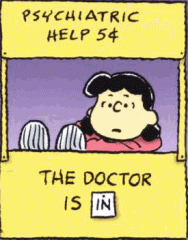![]()
![]()
![]()
Use LEFT and RIGHT arrow keys to navigate between flashcards;
Use UP and DOWN arrow keys to flip the card;
H to show hint;
A reads text to speech;
12 Cards in this Set
- Front
- Back

NORMALITY |
It can be defined as a pattern of thoughts, feelings or behaviour that conforms to a usual, typical or expected standard.
There are different factors to determining what is a typical standard. |
|
|
APPROACHES TO DEFINING NORMALITY |
Socio-cultural approach - thoughts, feelings and behaviour that are acceptable or appropriate in a particular society or culture that are viewed as normal and those that are considered inappropriate or unacceptable are considered abnormal.
Functional approach - thoughts, feelings and behaviour are viewed as normal if the individual is able to cope with living independently in society, but considered abnormal if the individual is unable to function effectively in society, i.e making friends is normal and avoiding relationships is abnormal.
Historical approach - What is considered normal and abnormal in a particular society or culture depends on the era when the judgement is made, i.e it is considered normal for a parent to smack their child in the 20th century but is considered abnormal today.
Situational approach - Within a society or culture, thoughts, feelings and behaviour that may be considered normal in one situation may be considered abnormal in another, i.e coming to school wearing pyjamas is considered abnormal but wearing pyjamas to bed is normal.
Medical approach - Abnormal thoughts, feelings and behaviour are viewed as having an underlying biological cause and can usually be diagnosed and treated, i.e if someone feels depressed all the time it can be due to an imbalance of chemicals in the brain so prescribed medication may be used.
Statistical approach - Is based on the idea that any behaviour or characteristic in a large group of individuals is distributed in a particular way; that is, in a normal distribution, i.e it is normal to laugh when tickled because the statistical average (majority of people) do this. Yet the it is abnormal to laugh when hearing about the death of a loved one because the statistical extremity (minority of people) do this. |
|

DIFFERENTIATING MENTAL HEALTH FROM MENTAL ILLNESS |
Mental health - is the capacity of an individual to interact with others and the environment in ways that promote subjective wellbeing, optimal development throughout the lifespan and effective use of the person's cognitive, emotional and social abilities.
Mental health problem - when a person experiences distress consistently and certain thoughts or feelings begin to interfere with daily life (e.g lack of concentration/sleeping habits).
Mental illness - (mental disorder) is a psychological disorder that significantly interferes with an individual's cognitive, emotional or social abilities. This can only be diagnosed by a qualified professional. |
|
|
SYSTEMS OF CLASSIFICATION OF MENTAL CONDITIONS AND DISORDERS |
There are currently two main approaches to classifying mental disorders or mental illnesses. These are called the categorical approach and the dimensional approach. |
|
|
CATEGORICAL APPROACHES |
A system of classifying mental conditions and disorders that uses a categorical approach organises and describes mental conditions and disorders in terms of different categories and subcategories, each with symptoms and characteristics that are typical of specific mental conditions and disorders.
The first categorical classification system for mental disorders was published by psychiatrist, Emil Kraepelin. He provided the basis for developing the two most recognised categorical classification systems for mental disorders, DSM and ICD. |
|

DIAGNOSTIC AND STATISTICAL MANUAL OF MENTAL DISORDERS (DSM) |
The DSM is a categorical system for diagnosing and classifying mental disorders based on recognisable symptoms that are precisely described for each disorder. there are 365 mental disorders grouped into 16 major categories.
DSM criteria that assist diagnosis - diagnostic criteria indicate the symptoms that are characteristic of the disorder and thus enable assessment of the presence of the disorder.
The inclusion criteria refers to the symptoms that must be present to be classified for the mental disorder.
The exclusion criteria refers to the symptoms that must NOT be present to classify the mental disorder.
Polythetic criteria sets - are a list of diagnostic criteria in which only some of the symptoms need to be present in order to diagnose the disorder.
The DSM-IV-TR does not suggest causes (aetiology) of any disorder unless a cause can be definitely established.
DSM axes that assist diagnosis When making a diagnosis using the DSM, information in relation to five different 'axes' must be considered in order to completely evaluate an individual's mental condition. Each axis refers to different information about a person and their mental condition. |
|
|
AXES IN THE MULTIAXIAL SYSTEM |
Axis I - Clinical disorders and other conditions that may be a focus of clinical attention.
Axis II - Personality disorders and mental retardation.
Axis III - general medical conditions
Axis IV - Psychosocial and environmental problems.
Axis V - Global assessment of functioning
|
|
|
INTERNATIONAL CLASSIFICATION OF DISEASES AND RELATED HEALTH PROBLEMS |
The ICD is a categorical system for diagnosing and classifying diseases and disorders based on recognisable symptoms that are precisely described for each disease and disorder. it is primarily used in Europe.
Diagnostic guidelines are provided for each disorder. Diagnostic guidelines identify the symptoms that are characteristic of the disorder and thus indicate the presence of the disorder.
It is a less detailed categorical system than the DSM. |
|
|
STRENGTHS AND LIMITATIONS OF CATEGORICAL APPROACHES |
Strengths -Categorical approaches to the classification of mental disorders, such as the DSM and ICD, are regularly revised on the basis of ongoing scientific research. They are also useful in facilitating the growth of expert knowledge about mental disorders among mental health professionals and the community in general. -The main purpose of categorical systems is to assist mental health professionals in diagnosing the mental conditions of their clients so they can devise a treatment and management plan for those who require it - these categorical systems are found to be user-friendly. -Categorical approaches enhance communication among mental health professionals by providing a common language and terminology which is helpful for when health professionals communicate about a client's mental health as they have a common understanding of what is being discussed.
Limitations -In the past, categorical approaches to classification was their low inter-rater reliability, as different conclusions were found for the same clients. -One of the underlying principles of the categorical approach is that the symptoms described for each category must be discrete and separate from all the others. Except there is overlapping which can be difficult for mental health professionals to diagnose which disorder. -There is a substantial loss of valuable clinical information as the uniqueness of a person is overlooked. -Clients that are classified as a label may experience social stigma. Stigma is a sign of social unacceptability or undesirability, often involving shame or disgrace. |
|

DIMENSIONAL APPROACHES |
A dimensional approach, also called a spectrum approach or continuum approach quantifies a person's symptoms or other characteristics of interest and represents them with numerical values of one or more continuums, rather than assigning them to a mental disorder category.
A dimension is most commonly viewed as a cluster of related psychological and/or behavioural characteristics that tend to occur together and can be measured.
For example, the Eysenck Personality Questionnaire Revised (EPQ-R) is an inventory that adopts a dimensional approach. Because it adopts a dimensional approach, the EPQ-R does not aim to decide whether a person 'has' or 'doesn't have' a personality disorder-it is designed to measure three dimensions of personality.
Key features -A mental disorder is considered by grading a person in terms of the magnitude, degree or severity on particular dimensions rather than assigning them to a diagnostic category. By conducting assessments at different intervals and comparing scores on one or more scales, mental health professionals can monitor the changes over time in an individual's mental condition. -The standardised inventories can be used to produce a profile of an individual's scores on the dimensions that are measured which can reflect the uniqueness of an individual's pattern of thoughts, feelings and behaviours. |
|
|
STRENGTHS AND LIMITATIONS OF DIMENSIONAL APPROACHES |
Strengths -dimensional approaches take into account a wider range of a person's unique symptoms and characteristics. -the emphasis on quantifying dimensions on scales can also provide a richer and more detailed description of an individual's mental condition in the form of a profile, as compared with the briefer summary of the categorical approach in terms of whether the person 'has' or 'does not have' a mental disorder of some kind. -using dimensional approaches help reduce the stigma usually associated with the diagnosis of a specific mental disorder because the person is not labelled rather they have a 'profile of scores'.
Limitations -For most disorders in the DSM and ICD, there is no standardised inventory or system to support a mental health professional in using a dimensional approach to classification. -There is a disagreement among mental health professionals and researchers on the number of dimensions that would suitably represent the wide range of mental disorder symptoms people can experience. |
|
|
THE BIOPSYCHOSOCIAL FRAMEWORK |
It is an approach to describing and explaining how biological, psychological and social factors combine and interact to influence a person's physical and mental health.
Biological factors - involve physiologically based or determined influences, often not under our control, such as the genes we inherit and our neurochemistry.
Psychological factors - involve all those influences associated with mental processes, such as how we think, learn, make decisions, solve problems, perceive our internal and external environment, manage stress and reconstruct memories, among other things.
Social factors - are described broadly to include such factors such as our skills in interacting with others, the range and quality of our inter-personal relationships, and the amount and type of support available from others when needed. They also include cultural influences such as our values and traditions, family upbringing, exposure to trauma and stressors, income level and so on.
The biopsychosocial framework reflects a holistic view of health, that is, the individual should be considered as a 'whole person' functioning in their unique environment. Thus all three domains are equally important for both physical and mental health. |

